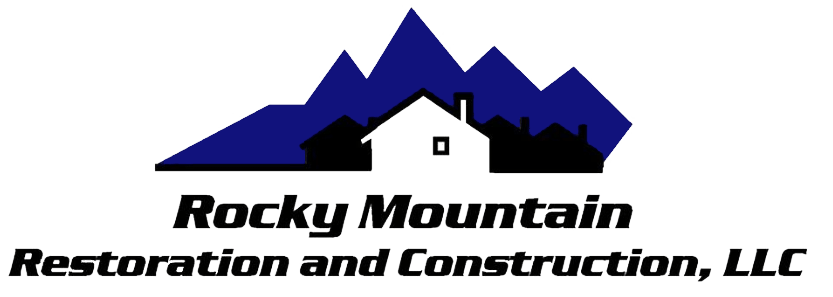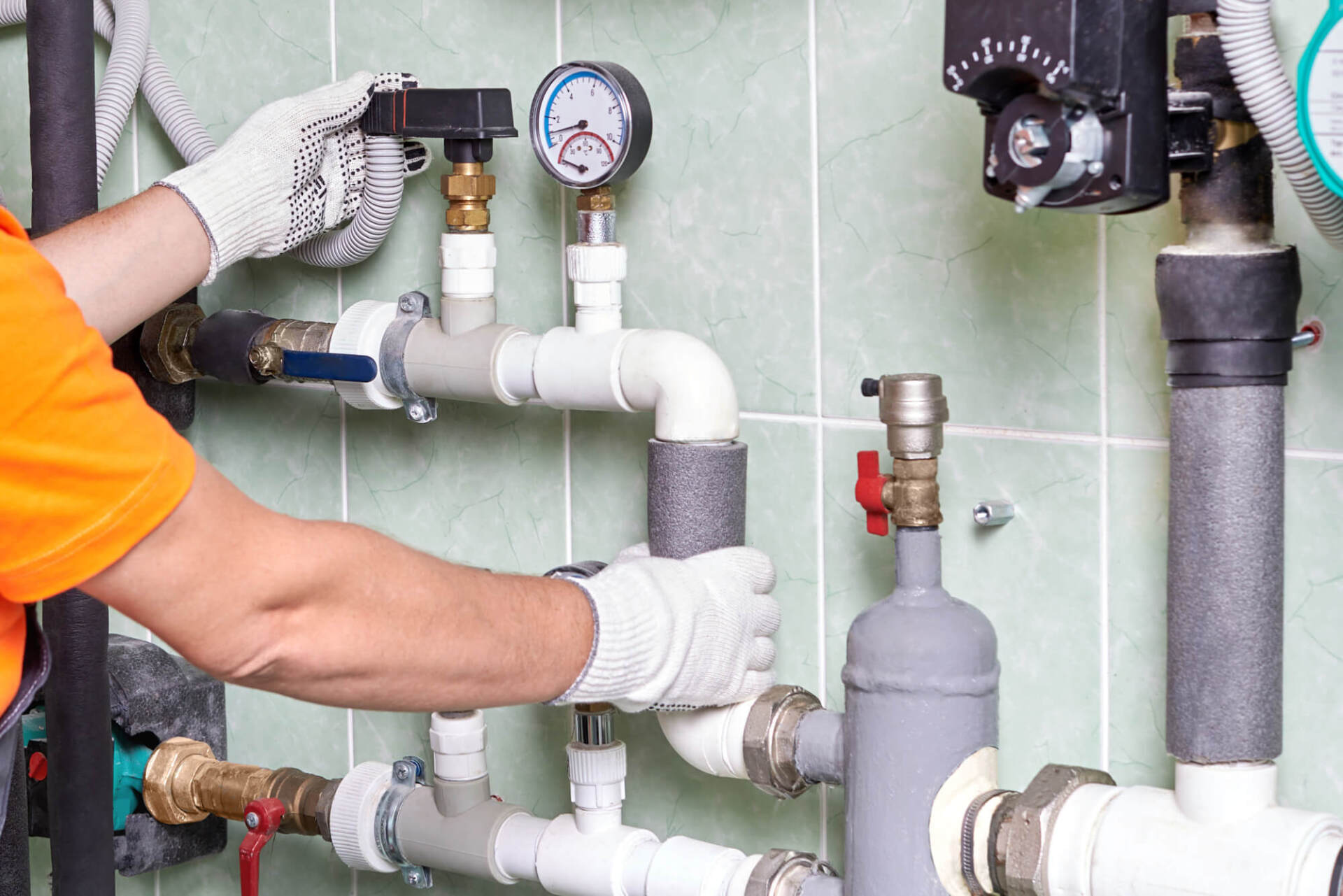The Basics of Plumbing Traps
Kennon Petrini • March 3, 2020
Here are the basic tips regarding traps and how they are used in your plumbing.
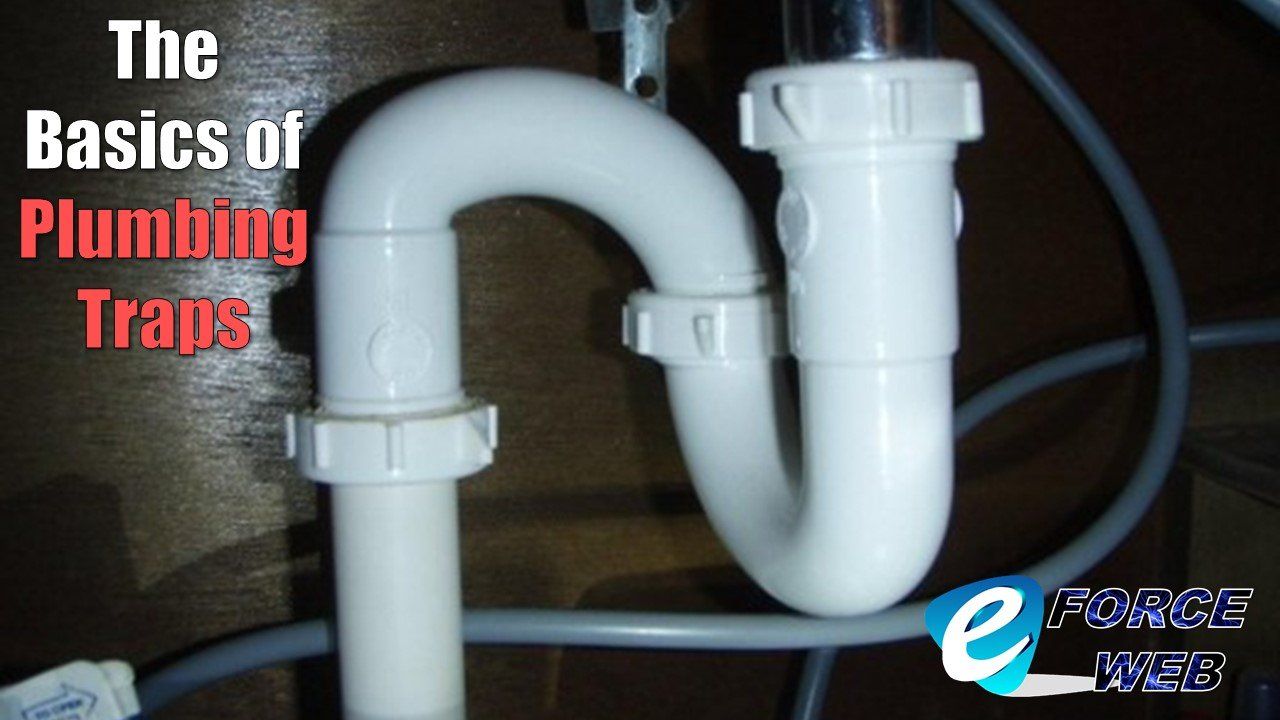
The plumbing of a home is simple to understand once you know the function of each part of the system. The plumbing traps is seen under the sink with the home’s plumbing, and is the plug of water that stays in the dip of the plumbing to create a seal in the pipe. This trap is located at the bottom of the “U” shaped area of the pipe under most sinks. The trap holds a small dip in the pipe to keep a small bit of water in the trap, which acts as a type of trap door. The first role of the plumbing trap is to prevent gas from associated sewers from coming back into the house. These traps are an important part of the home plumbing system, and need to be continually maintained to prevent health hazards for the people living in the home.
Plumbing traps can come in many different sizes and shapes, and will be measured depending on the volume of water that the trap is expected to handle. In general, washing machines and high- volume appliances will utilize a 2-inch diameter trap, whereby toilet traps are usually larger in circumference. Notably, a bathroom sink trap will be efficient at only 1 ¼ inch in that case.
The older style traps S-trap and drum trap were used frequently in the last 100 years, but are not as widely used today. In that case, drum traps were used only in bathrooms and were actually fitted into the floor nearby to the toilet. The top of the drum trap had a brass cleanout plug that was visible on the floor, with inlet pipes that entered the drum at a place lower than the outlet, creating a water seal. The S-traps connected from the sink directly down the drum pipes at the floor level. These are not used today as they miss compliance with today’s more stringent building codes.
An efficient external trap is the P-trap, which has a U-shaped bend and similarly bent trap arm which makes them easy to take apart and maintain. The P-traps can be made of chrome-plated brass, or plastic (with beveled joints). These trapes are seen most commonly with bathtubs and showers, and once assembled are not meant to be taken apart.
Running traps are made similarly to P-traps. A running trap is used to replace a non-functioning P-trap. For example, if a drain is put in an outside area of a building, but the trap is found inside to keep it warm, this may likely be a running trap. Building codes today note that the running trap has to be 2 feet away from a fixture outlet or floor drain, or else the trap could lead to a siphoning issue.
A house trap is placed under a soil pipe below the basement floor. It is usually around 4 inches wide, and an area drain could be found in a garage to accommodate it. Likewise, built-in traps are used with toilets, but are not used as double traps in the bathroom. When two traps are built too close together, one trap could start to siphon water from the other trap, and homeowners should lookout for this situation to prevent it from occurring. The siphoning action is when negative pressure forces water out of a trap, taking away the trap seal, and allowing gas to pass back up the pipe to the residential or commercial property. This action can be hazardous to human health to breathe in dangerous fumes or gasses from a sewer or septic tank if this poisonous air is able to leach back into a home or office space through the plumbing.
If there is a bathroom in a basement area of the home that doesn’t get much use, it is better to keep water flowing in those plumbing fixtures to keep the traps from drying out completely. For example, if a toilet is located in a basement area is hardly used in colder months, that trap could dry out, which could allow sewer gases to leak back into the pipe and find a way into the home as a well. This result can also occur with a basement floor drain that does not have water running into the drain. One way to help remedy this issue is to just pour some water down the drain on a regular basis, especially if that drain hasn’t been used in several months.
If you have any issues with the flowing of water in your traps, need replacement of any traps in your home or office environment, give us a call and we can advise on the best options to take care of these issues for you. We are available 24/7 to perform any necessary trap repairs. Just give us a call now, we are standing by and can have our team in your area quickly to resolve your plumbing issues – pronto!
Plumbing traps can come in many different sizes and shapes, and will be measured depending on the volume of water that the trap is expected to handle. In general, washing machines and high- volume appliances will utilize a 2-inch diameter trap, whereby toilet traps are usually larger in circumference. Notably, a bathroom sink trap will be efficient at only 1 ¼ inch in that case.
Traps will vary by size, but will also need to have a configuration that allows wastewater to pass out of the trap, all the while keeping a water reserve in the trap as a seal. For this reason, only manufactured traps should be used in residential and commercial plumbing systems, and not traps fashioned together on the fly to fill in during a repair.
Goodbye S-Traps and Drum Traps
The older style traps S-trap and drum trap were used frequently in the last 100 years, but are not as widely used today. In that case, drum traps were used only in bathrooms and were actually fitted into the floor nearby to the toilet. The top of the drum trap had a brass cleanout plug that was visible on the floor, with inlet pipes that entered the drum at a place lower than the outlet, creating a water seal. The S-traps connected from the sink directly down the drum pipes at the floor level. These are not used today as they miss compliance with today’s more stringent building codes.
An efficient external trap is the P-trap, which has a U-shaped bend and similarly bent trap arm which makes them easy to take apart and maintain. The P-traps can be made of chrome-plated brass, or plastic (with beveled joints). These trapes are seen most commonly with bathtubs and showers, and once assembled are not meant to be taken apart.
Running Traps
House Traps
If there is a bathroom in a basement area of the home that doesn’t get much use, it is better to keep water flowing in those plumbing fixtures to keep the traps from drying out completely. For example, if a toilet is located in a basement area is hardly used in colder months, that trap could dry out, which could allow sewer gases to leak back into the pipe and find a way into the home as a well. This result can also occur with a basement floor drain that does not have water running into the drain. One way to help remedy this issue is to just pour some water down the drain on a regular basis, especially if that drain hasn’t been used in several months.
If you have any issues with the flowing of water in your traps, need replacement of any traps in your home or office environment, give us a call and we can advise on the best options to take care of these issues for you. We are available 24/7 to perform any necessary trap repairs. Just give us a call now, we are standing by and can have our team in your area quickly to resolve your plumbing issues – pronto!
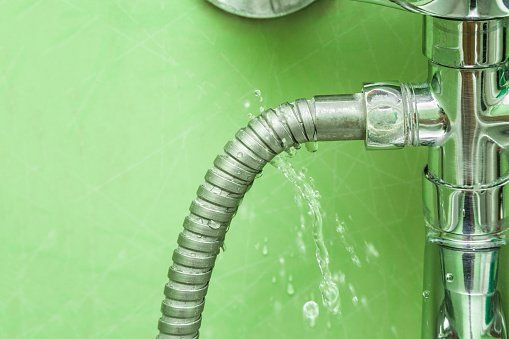
It is the case that water leaks are bound to happen in any home. When water starts to leak, it can come from a variety of sources. Drips and small leaks can be found in these areas of the • Shower stalls • Bathroom tubs • Kitchen faucets • Leaking appliances that use water • Washing machines • Dishwashing machines • Under sinks • Outside area faucets and fixtures When you find a leak, it usually won’t clear up on its own. The problem usually will start to accumulate. We are able to repair any type of faucet leak, including: • Compression faucets • Ball-type faucets • Cartridge faucets • Ceramic-disc faucets In the bathroom, it is easy for older fixtures to begin to leak. Over time they become lose and leak often without the homeowner noticing at first. We are able to repair any type of toilet leak, including: • Pressure-assisted toilets • Toilet flanges • New toilets • Gravity-flow toilets At first, the fixture may develop a slow drip over time, which may turn into a constant leak on a daily basis. These types of leaks are particularly troublesome, and can damage sinks by keeping them continually wet, can create ridges, as well as mold and mildew. These leaks need to be repaired as soon as possible to prevent further damage to the fixtures and basins. In the kitchen area, faucet leaks can occur from the top end as a drip, and below the cabinet as a leak. The water below the cabinet area can drip continually to create a hole in the wood, and may start the process to grow mold and mildew in these dark areas under the sink. It is important to fix kitchen sink drips and leaks as soon as possible, because leaks will start to eat at the bottom connections to the sink, and create a bigger problem. Basement leaks due to water lines or other issues are on the list of possible leaks that can occur in a home. Basement leaks can be the result of many causes, namely: • Water heaters • Pipe leaks • Water softener leaks • Above floor sump pumps • Submersible sump pumps Whenever there is a water damage-related leak in the basement, it will need to be repaired quickly to prevent further damage from occurring in that area. Finally, it is important to note that basement leaks and pooled water can also be the result of rainwater or water damage that accumulates around the foundation of the hole, cracks and basement level windows, sills or wells, or near broken or faulty sump pipes. Give us a call at bluefrog Plumbing + Drain in Front Range when you experience a water damage leak or unresolved water damage issue. We are here for your plumbing needs, and we can get you back up and running fast.
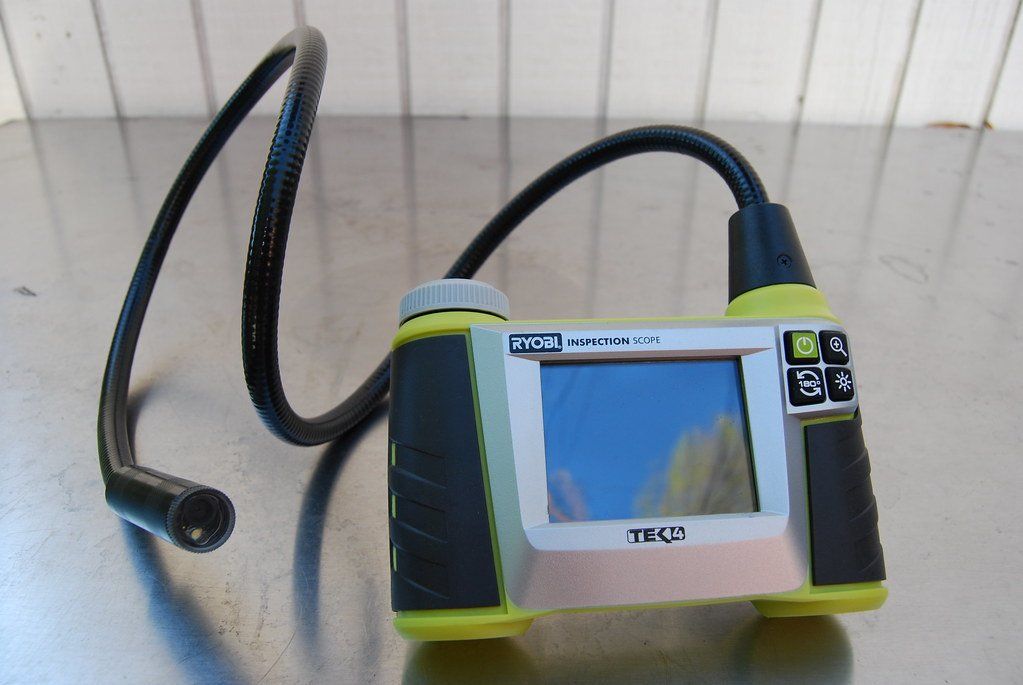
A camera inspection is a tool used by a plumber to look deep inside the pipes with a high-resolution camera that has an attached flexible rod. The camera alerts the plumber in real time to the pipe walls, conditions and content, and a recording of the reviewed pipe areas can be made to use at a later time to determine repair plans. Sewer cameras can also be used, which go hundreds of feet into the sewer lines to find collapsed or blocked internal structure. Camera inspections can help to review pipes and determine the origin of any clogs that appear to stop up a piping system. This tool is useful for a view of the home’s interior plumbing system for: • The purchase of a home • Before remodeling and additions construction • The internal inspection of septic systems • To retrieve lost items of high sentimental or monetary value The inspection of home plumbing should be performed on a regular basis to prevent problems that may happen in the plumbing, before these issues can occur and manifest as a problem for the homeowner. The inspections will help to determine a plan to: • Make sure the proper draining from the pipes exist • Check for any leaks with the pipe system Checking the plumbing system with a camera inspection will also review the pipes to determine the reason for any drains that run slowly, such as if the drains are clogged with: • Sanitary wastes (tissues, feminine hygiene products) • Liquid wastes (fats, oils, grease) The homeowner can consider the following tips to prevent clogged drains in the future: • Use sink drains to prevent non-biodegradable items from freely flowing into the drain • Slow drains should be cleaned as soon as possible to prevent larger blockages • Use a fat trap to dispose of waste fats, grease and oils from cooking Give us a call at bluefrog Plumbing + Drain in Front Range when you experience a water damage leak or unresolved water damage issue. We are here for your plumbing needs, and we can get you back up and running fast.
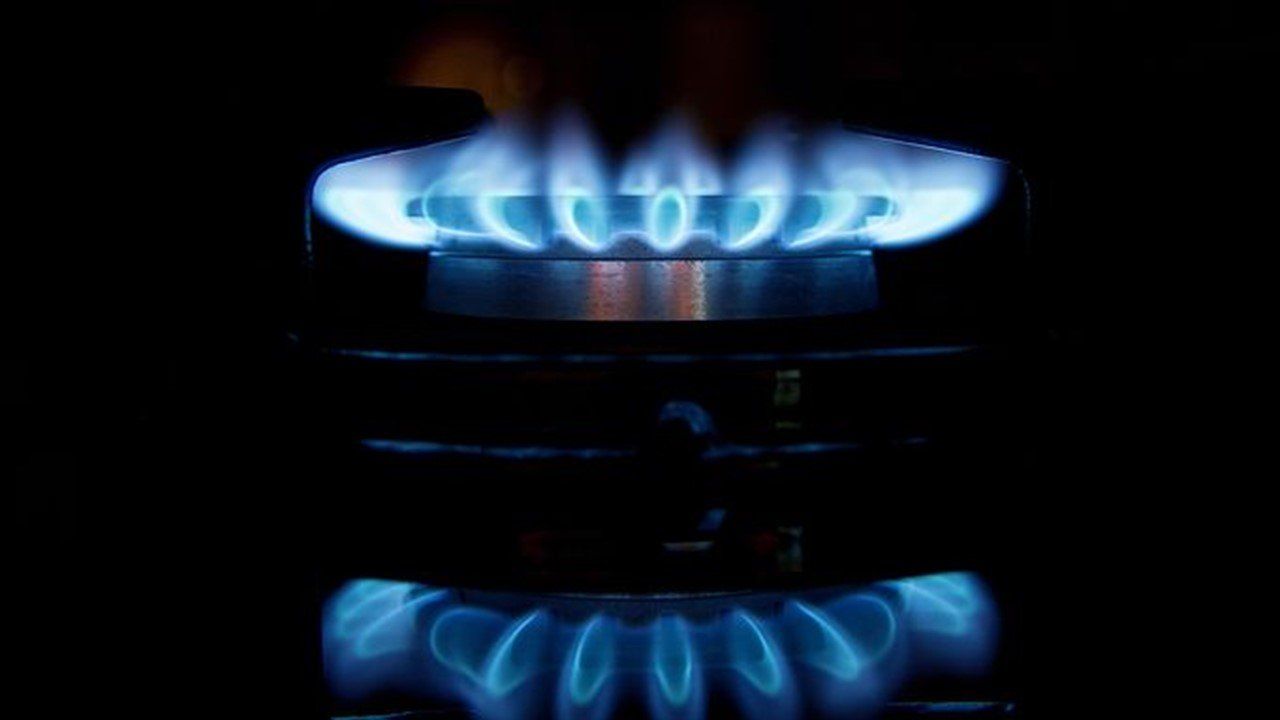
Whenever a homeowners or business owner suspects a gas leak, it is always considered an emergency and needs to be followed through right away. The U.S. Environmental Protection Agency has issued and continually updated Leak Detection and Repair (LDAR) regulations for compliance with gas leak detection in commercial businesses to prevent 70,000 tons of VOCs (volatile organic compounds) and 10,000 tons of volatile hazardous air pollutants (FHAPs) from being admitted into the air in communities across the country. In the case of commercial gas leaks from large businesses, the focus is on the maintenance of equipment to regulate leaks, preventing mistakes when monitoring gas leaks, and the maintenance of best practices, protocols and procedures when investigating gas leaks. These same general rules can be applied to homeowner suspected gas leaks, to offer some basic guidelines on what to do if you suspect a gas leak in and around your home, or at your commercial business. First off, natural gas line leaks are rare, it is not something that will happen to a homeowner except in rare instances. The first sign that there may be a natural gas leak at the home is the smell of rotten eggs. By the way, natural gas itself is actually odorless and colorless , it is also invisible and there is no telltale sign of a leak for most purposes. For this reason, a chemical has been added to the gas for homeowners to give it a strong and pungent rotten egg smell, which will alert a homeowner quickly in the event of a natural gas leak on the property. Natural gas leaks are a serious hazard because of the risk of an explosion that could occur in the area of a natural gas leak. Generally speaking, natural gas is an extremely volatile gas element that if encased in a small space it could become explosive. Luckily, explosions are rare without oxygen and a flame, but the danger of a potential explosion will always exist as a possibility when natural gas is leaking at a homeowner’s property. Secondly, when natural gas is not vented properly out of a room or a home, there can be a build up of carbon monoxide. The carbon monoxide is a lethal compound gas to breathe in, and there is also a real danger of asphyxiation if the gas levels are able to rise in this type of scenario. If the homeowner has a gas detection meter, it may be able to relay accurate information as to the presence of a gas leak. But the best idea by far is to call in the pros to determine if there is a gas leak and arrange for the professionals to make any necessary repairs to remedy the situation. Next are life-saving tips to follow in the event of a suspected gas leak at your home of office environment. 1. Never go looking for the source of a suspected gas leak yourself. The friction of moving furniture or boxes around could ignite a spark and set off a dangerous explosion. 2. Never use your mobile phone or wall mounted phone near a gas leak. If already on your mobile phone, just exit the room quickly and do not hang up! 3. Do not touch any appliances, whether to turn them on or off. 4. Do not touch any light switches to turn them on or off. Just exit the room quickly and leave all of the lights on. 5. Do not stay in a room, building or home with a suspected gas leak. You may be breathing in deadly fumes and not know it. 6. Never try to put out any fires started by a natural gas leak. Leave it to the professionals. 7. Call for help once you are safely away from a suspected gas leak in a home or business. In the event that you suspect a natural gas leak, or have a sense that you smell natural gas in or around your home or business, just give us a call. We will come to you without delay and determine if you do in fact have a natural gas leak. We are here for you 24/7, no time is too late or too early, just call us with your concerns and we will be out to you to remedy the situation, pronto.
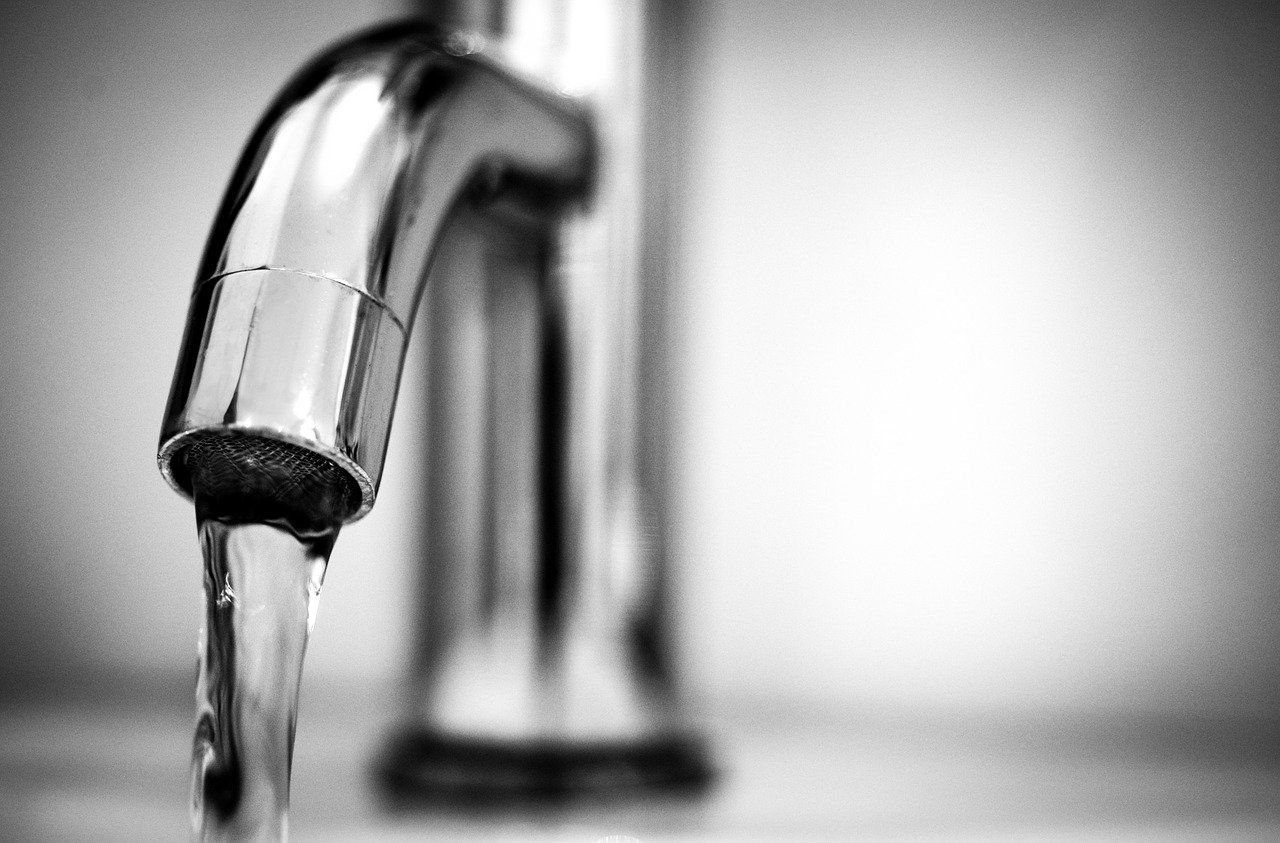
Most people don’t consider that the water coming up from a faucet in home or office had to come from somewhere, at that place is that it came from a water system or drain pipe. Drain pipes routinely route water from the ground of from a municipal water source to your residential or commercial property to distribute water to these areas for your daily use. We use water that comes to us from the water system and drain pipes, the water leaves our home and office through another pipe and eventually gets cleaned, processed and recycled to use all over again. Water is fluid, always moving and a powerful source of life. It is also able to dissolve, move along and even suspend many substances, some of which may be toxic to humans. If we drink water from our faucets, then the pipe system all along the route where the water flows must be clean – or as the water passes through it, it will pick up contaminants present in the pipes. Many times there are chemicals, contaminants or sediment can be in the water that we drink, and we can’t even see these issues which can be small or microscopic in scale. These contaminants may be harmful to human health, and could contain viruses or diseases that can be passed along to humans who ingest the water for drinking and cooking. Our two main resources for drinking water can come from either ground water resources such as wells or springs , or from the surface water captured from access to rivers, lakes or reservoirs. Both of these water resources are treated and disinfected as necessary to provide safe potable water, then the water is sent through networks of pipes to the residents living in towns and cities across the country. Generally speaking, a water treatment facility is used for all water distribution to a community to remove any contaminants or impurities form the water, and send out only clean water to the community members relying on these water resources. The used water that moves away from the residential or commercial property leaves through a different set of pipes that moves wastewater from the property. This water is pushed through the drain pipes, or flushed away from the home or office to go into a sewer system, disposal system, septic system or other wastewater facility system for treatment. In the case of a septic system, the waste water flows into a leach field or leaching system that is underground as seen in a series of pipes that further filter the water, and later release it to the soil. If the water is being processed in a larger urban area, it will be cleaned according to strict state and federal government standards, before being released back into the ground. There are many types of microscopic organisms and bacteria that live in water, and all of them are not bad! Some bacteria are good and they help act as nature’s cleansers – to help purify water of any impurities. This is why you should dispose of harmful chemicals properly, and never flush, spray or pour hazardous chemicals down the toilet or into any drain. For this reason, paints, paint solvents, paint thinners, household chemicals, or chemical waste products should never be put into the residential or commercial property drains as a way to dispose of these hazards. They can damage the water filtration system and hurt the environment if improperly disposed of down the drain. Any time that you experience a drain problem, just know that we are here to take your call – and will come to you without delay to resolve your drain issues. Just give us a call any time that you need us for drain issues, slow drains, or for any drain concern. Call today, we are here for you!

Summertime brings sun and fun, and also brings heavy rain and storms. These intense weather patterns when hot air mixes with cold air can bring strong rain events that can result in flooding. Any time that a home with a private well experiences a flood, there can be issues with the underground well. The well can be contaminated by the floodwaters even after the water recedes. If an underground well has had contact with floodwaters, the water in the well can be unsafe to use for daily drinking or bathing purposes. A well that has been susceptible to contamination from a flood is no longer a potable reserve for water for a residence or commercial property. In those cases, well water that has been open to contamination from floodwaters can be a serious health hazard for humans. Drinking or bathing from water in a well that has been made unsafe by floodwaters can even cause death for individuals who are exposed to contaminated water. For this reason, the well needs to be checked carefully after a flood to determine if the water is still safe for the use of the home. Additionally, water needs to be tested after a flood, and this is a critical step to ensuring that the water is safe to drink. Without testing and a review of the well, even clear looking water may hold deadly contaminants, it is better to get it checked out first before use. Of course, once the floodwaters have receded, many homeowners will be anxious to get back to their properties to find and salvage their personal belongings, as well as to clean up their flood-related debris. But as a warning, you should never touch, bath in, drink or come into contact with any flood-related debris from floodwaters after a flood. Before the water can be certified as safe to use again for daily household use, it will need to be professionally tested. The water will need to have a chlorinated process applied to it, to clear up all the flood-related contaminants to prevent reintroducing contamination to the area of the well. In any event that the well may be at risk of being contaminated after a flood, you should never use the affected flood contaminated water to: • Brush teeth • Wash laundry • Bathing and showering • Drink water • Make ice cubes • Cook with water Remember, the act of boiling contaminated water does not get rid of all of the contaminants, it still needs to be reviewed by a professional safety. You should be aware that although boiling clear water for over one minute can make it somewhat safer for use in some cases, the action of boiling highly contaminated water can also make the water wholly unsafe to drink. This is because boiling contaminants in water can also serve to increase the concentration of some contaminants such as nitrates. Contaminants hiding in water affected by flood may not be viewed or even seen with the naked eye. For this reason, contaminants and microorganisms may be lurking in what appears to be clean-looking water, even though we can’t see the bacteria, they are still there and can be hazardous to human health! Bacteria, viruses, chemicals and even pesticides can remain as viable contaminants in well water that has been overrun by a flood, and these contaminants make your well water unsuitable and unsafe to utilize for your home and family needs. Don’t forget that floodwaters and carry viruses, bacteria and molds over many large land areas, even over entire neighborhoods, to contaminate water resources serviced by these regions. It is noted that for safety reasons, and to prevent the risk of shock, a well pump that has been overrun by floodwater should not be used until it is cleared by an electrical professional to say that it is all safe to use again. After the floodwaters go down again, schedule an electrical professional to come to your home to check out any electrical systems related to the pump to assess any damaged components before it is used again. If you experience floodwaters in or around your residential or commercial property, just give us a call for assistance. We are able to come to you when you need us. We are you #1 resource for emergency plumbing in Colorado Springs. Just call bluefrog plumbing in Colorado Springs, we are here for you and can come to you any time that you need us. We are able to give you peace of mind and help you get back to a normal schedule after we review your well pump and make any remediation necessary to fix the situation after a water damage loss related to floodwaters. Call us 24/7, we are here for you!
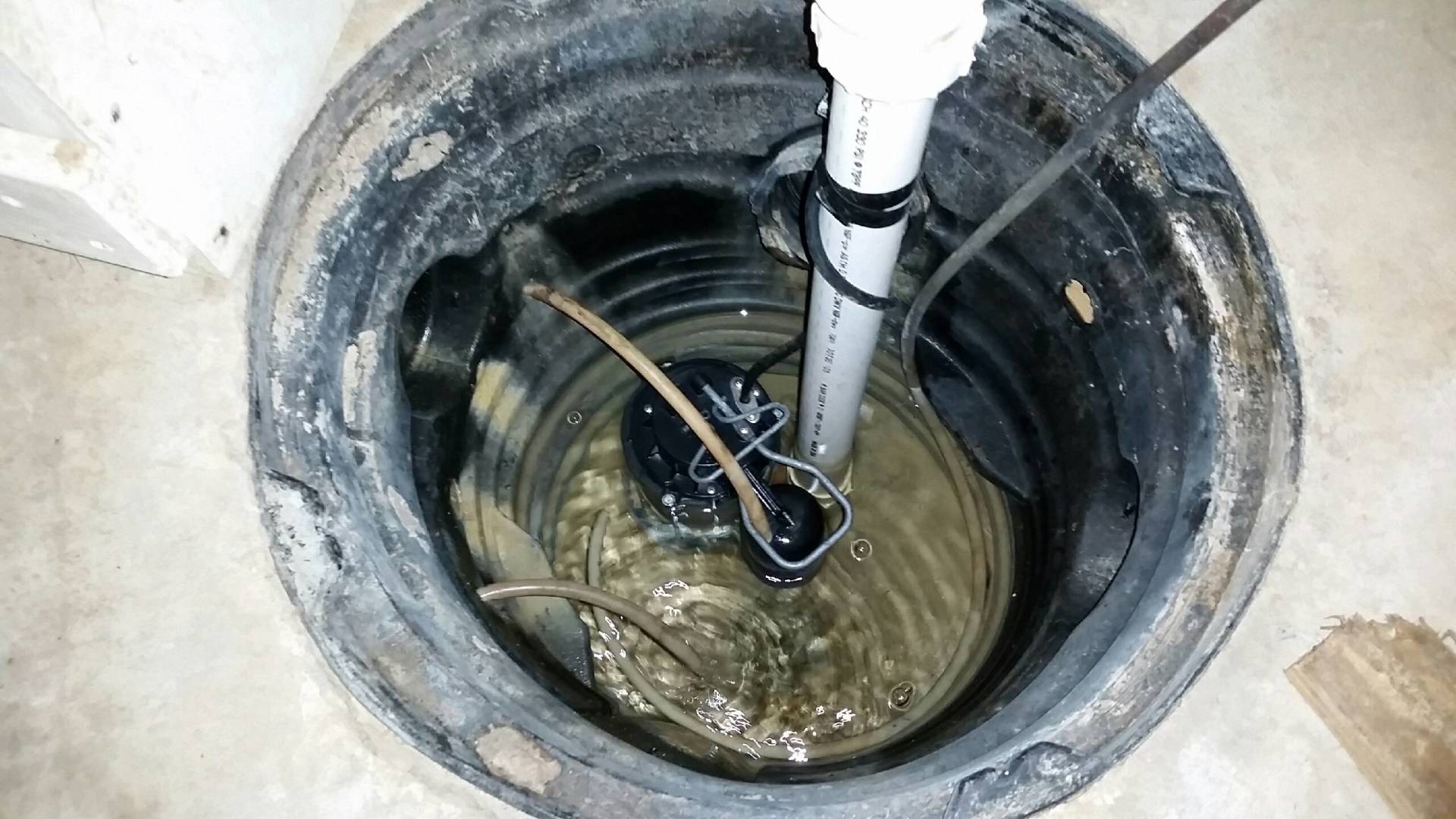
Pumps are useful when it comes to the immediate removal of floodwaters after a flood or high- water event. Floodwaters can affect residential and commercial properties in a detrimental way, and can be a destructive and powerful force to infiltrate a property, leading to property damage and high economic costs. It is important that you get the right pump for the job when pumping out water around the home or office after a flood. Therefore, a short discussion on pumps will help to give better advice on which pump to consider. Generally speaking, there are two types of pumps. A sump pump is placed below or above ground level in a basement to remove water from a home during a flood in the basement area. It can be a submersible sump pump that will turn on automatically if the water pressure in the basement gets high, or if water starts to flood into the basement (activating the pump). Sump pumps are able to manage silt, small debris and lower level water volumes under 4,000 gallons per hour. Trash or utility pumps can sit at water level on the floor or ground, and suck water into the pump to move out of the house through a garden hose towards a window of the home, to dump the water outside away from the home to remediate a flooded basement. These pumps can push 10,000 gallons of water per hour through the pump to take water away from a basement during a flooding event. When choosing a pump, first you must decide what purpose your pump will serve in ridding water damage or floodwaters from your home. A self-priming, high-volume pump will run until the water goes dry, and shut itself off without burning out the motor. If the pump will be place in potentially debris-filled water, there should be a filtering system used, or choose the trash/utility type of pump for assistance. Next, decide if you want a gasoline or electric pump. Electric pumps need to keep a plugged-in connection all along the line as they are being used. It is important to make sure that you can keep the chord dry and elevated out of the floodwaters being remediated while the pump is working, if at all possible. The worst-case scenario is that the plug does not stay dry, and gets wet while working on remediating the water. Another option is to use an electric pump with a generator, which can power several pumps at one time if necessary. Some people have used a swimming pool pump in an emergency situation to pump out water from a property, but this type of pump should not be the first-choice option or effective flood protection when floodwaters rise to dangerous levels indoors. Consider making up a plan on what steps that you will take to manage flood protection at your home or office. If necessary, plan to use more than one pump to get rid of any floodwater that rises up near hour residential or commercial property. If using a gasoline-powered pump or generator, take care not to use this type of pump inside, to prevent the risk of carbon monoxide poisoning or other harmful vapors inside of a home or office environment. In the event of needing an emergency plumber in Colorado Springs, call us for service. We are here to help you any time that you need us. You can count on bluefrog Plumbing + Drain in Colorado Springs, just give us a call for peace of mind and a new pump when you need it the most. Just call us 24/7, we will come to you whenever you call!
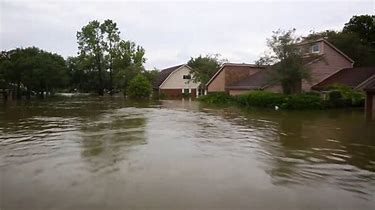
Some studies have noted that when humans are exposed to floodwaters that the exposure may increase the risk of acquiring gastrointestinal symptoms or related diseases. In the US, it is unusual for a person to experience an increase in gastrointestinal symptoms because of the initial exposure to contaminated water. When floodwaters overtake an area, the flood is able to pick up a variety of contaminants, microorganisms, bacteria and viruses along the way. The floodwaters will deposit the contaminants that it is carrying whenever the water stops running. It is important to prevent the ingestion of water that has been contaminated by floodwaters, as that can lead to gastrointestinal symptoms and diseases. People need to be aware that they can also come into contact with floodwater through flood-contaminated items. If they have touched, walked through, or tried to clean up floodwaters, the risk of exposure to the floodwater contaminants can be as high as 100%. Floodwaters can harbor many diseases such as: • Cryptosporidium • E. coli • Giardiasis • Tetanus • Vibrio vulnificus • Coliform • Pesticides • Harmful chemicals • Cholera • Hepatitis A The symptoms of gastroenteritis include: • Diarrhea • Abdominal cramps • Nausea • Vomiting • Muscle aches • Headache • Slight fever • Skin rashes The hazards that can be present in floodwaters also can include flammable liquids, storm debris, pesticides as well as household and industrial chemicals. When you experience water damage from floodwaters, it is difficult and exhausting to clean it up. That’s where we come in! we are able to clean up all contaminants related to floodwater, and prevent the spread of hazardous and harmful diseases. We are able to come to you 24/7, just give us a call at the first sign of floodwater or water damage.
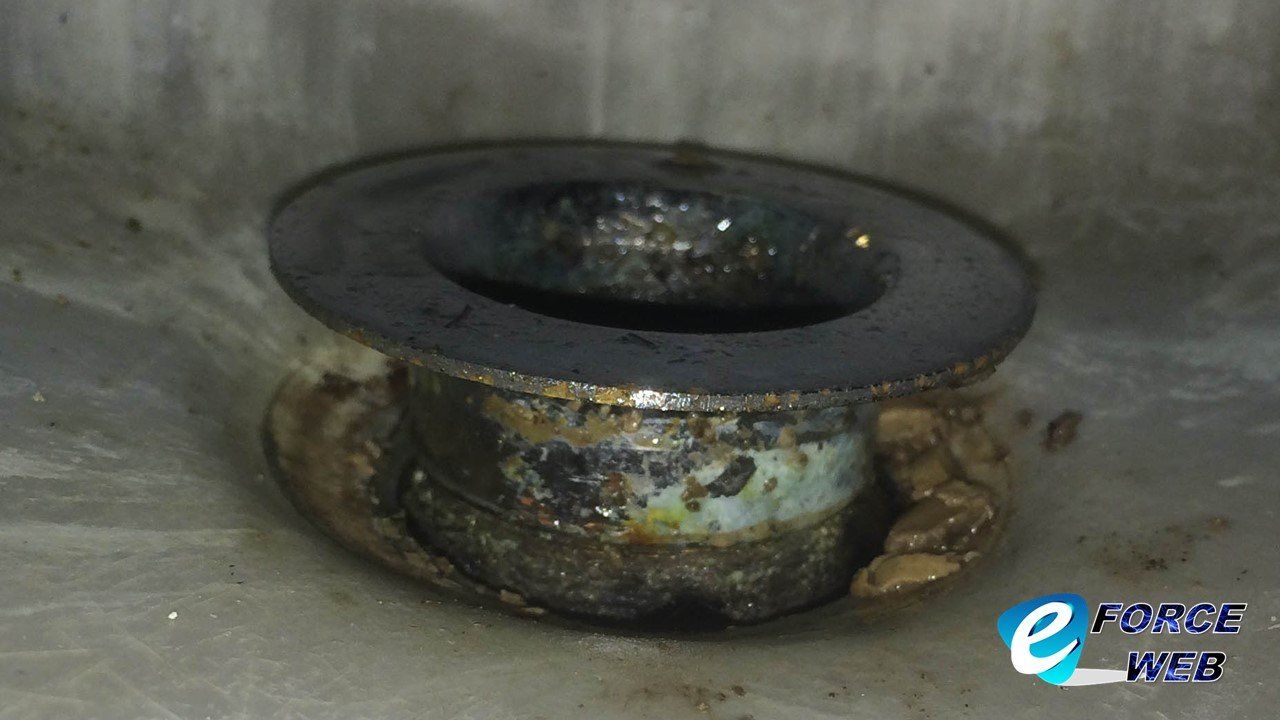
Drains, pipelines and water lines are the main way that water enters into and is drawn from a residential or commercial property. For this reason, it is important that the drains servicing a property be continually checked and regularly maintained. When a pipe is clogged, it will lead to eventual backups and water damage in the form of burst pipes, leaks, drips or water line failures at the property. Leaky or clogged pipes are much less efficient in removing water through properly maintained pipes and water systems. Leaks can occur in pipes leading to: • Laundry room • Kitchen sink drains • Bathroom sinks • Tub drains • Garbage disposals Clogged pipes can occur over time, and if you are interested in Green Solutions, we have that covered too. We are able to offer mechanical pipe cleaning for clogged or slow running drains. Some people do want to try their hand at DIY solutions for clearing out drain clogs, and here are a few of the tools that you can buy yourself if you want to give it a go. The first line of defense for a clogged drain is to utilize a plunger, which can work on getting a seal to help the water flow again using pressure of your hand on the plunger. The next solution may be to use a drain auger, which is a long coiled-wire cable that has an offset tubing crank, or has a spooled cable in a metal or plastic housed container. The drain auger uses a cranking arc that gives torque to help clear out a drain without the use of chemicals, making it a green solution to clogs. But it is necessary to use the tool carefully, to avoid spraying the black drain slime around the area being worked on as you are utilizing this tool to remove clogs in a drain. Next is a closet auger, which is a type of drain snake that is only used in toilets. This tool has a 3-foot metal tubing that can bend at a right angle at the bottom, and uses a crank rod and cable that can extend out 6 feet to help remove a toilet clog. The closet auger is the best way to get out a stubborn toilet drain, and using this method prevents any use of chemicals in the toilet that would get into a septic system. Finally, the last DIY drain clogging device to use would be a power auger. This tool can be used to clear clogs as a last result if the above tools are ineffective to remove a clogged drain. The power auger has a light duty or more serious model mostly used for sewer drains. The larger model is cost prohibitive for use with a DIY project. And that is why it is necessary to call out the pros, and we are here for you whenever you want us to come and clear out your drain clogs or stop those annoying leaks. When your drains need to be cleaned, we are able to come to you fast to clean out your drains. We provide several tools to ensure that your drains will be in good working order. We are you first responder plumber in Colorado Springs, and offer emergency plumbing whenever you need us. Video Inspection Our video inspection of your drains will highlight any problems or issues found deep within the drain. We use a video camera to show any concerns all along the drain pipes, and we can fix these problems fast right on the spot. Drain Snaking We utilize drain snaking whenever it is necessary to break open any blockages occurring in your drains. Drains can be clogged for a number of reasons, such as hair and debris backups, grease or for items that have been lodged in the drain that are not organic and do not belong there. Hydro-jetting We are also able to utilize a hydro-jetter to clear up any tough areas of blockage in a residential or commercial drain. Our technicians in Colorado Springs are able to perform emergency plumbing services today. We are highly trained to manage the cleaning of all types of drains, and we can make any necessary repairs whenever necessary to maintain the efficiency of the water lines and sewer lines. Just give us a call today at bluefrog Plumbing + Drain of FRONT RANGE, we are here to serve you now!
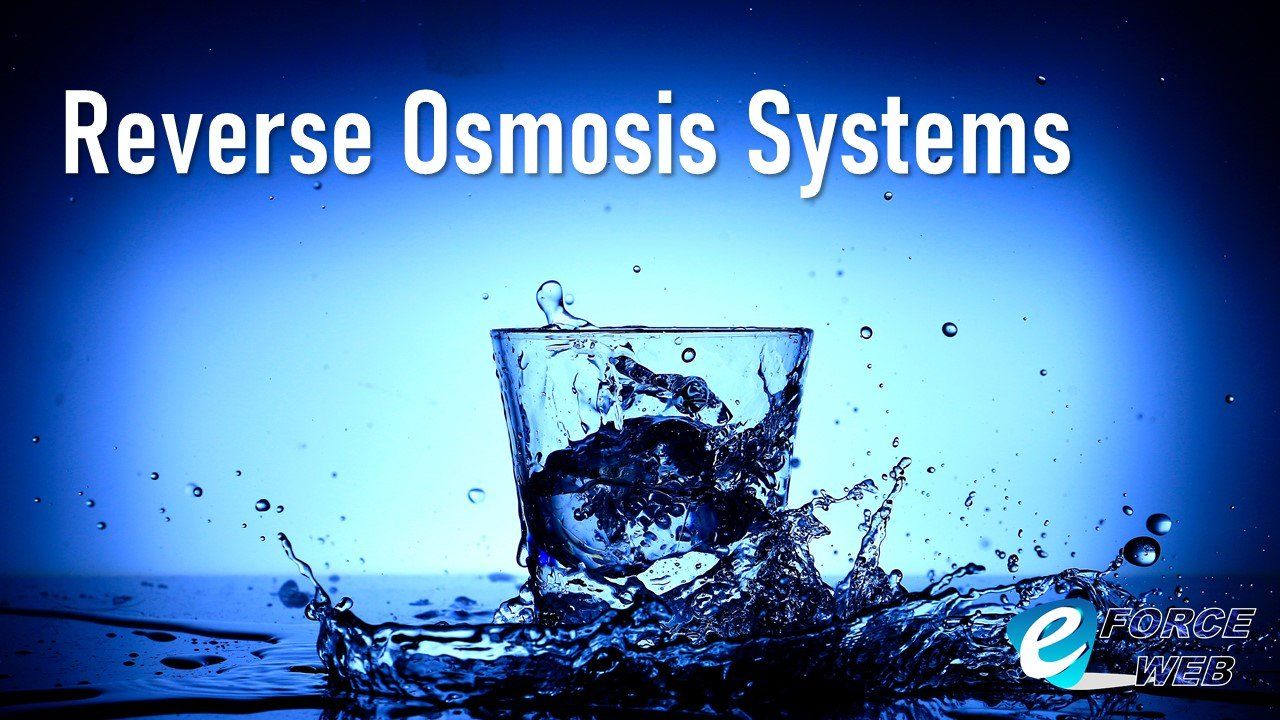
Reverse osmosis (RO) water filtration systems demineralize or deionize water by forcing it under pressure into a semi permeable reverse osmosis membrane. The process of osmosis happens every day in nature. You’ll find the process of osmosis going on any time there is a weaker solution that starts to move towards a stronger solution. An example of simple osmosis is a plant draining water from the soil in the ground. Water filtration systems that use RO work similarly to the plant drinking from the ground. In these systems, where the water with contamination is washed with saline, the water is drawn in through the semi permeable membrane with force water to start the process to clean out the water making it cleaner to drink. As the water passes through the membrane, the contaminants will stay in the area on the bottom of the saline tank. This process leaves behind any dissolved salts, pathogens, bacteria and contaminants, while the clean, fresh water flows easily through the membrane and ends up to become a purified water status of drinking water for a home. The process of reverse osmosis is able to take out nearly 99% of the dissolved salts, impurities, contaminants, organic matter and bacteria that can exist in tap water in a home. When the RO process filters water, it focuses on only releasing purified water molecules, which are smaller and lighter than the contaminants – which are left behind during the process. There are slight disadvantages to using this system to purify water. First, RO does not remove the gas CO2 very well, since gases are not highly ionized (changed) in the solution, and have a low molecular weight in most cases. For this reason, the end resulting water may carry a slightly lower than average pH level. Second, the RO system should be maintained to preserve the long-life of the system. This may include regular maintenance of the system 1-2 times a year at the least. A maintenance rule notes that if the normalized pressure drops or the salt passage goes up 15%, then the RO membranes should be routinely cleared at that time. The membranes can be cleaned offsite (which is recommended to remove them and take them to be cleaned by the authorized maintenance technician), or cleaned onsite (an acceptable way to clean them, but it is not as thorough). This cleaning either onsite of offsite is necessary to remove any leftover contaminants from the system to keep the water crystal clean. An advantage commercially for using RO is that it is highly effective to treat ground and surface water, even brackish water in large and small flow capacities. For this reason, it is used by many large industries such as food and beverage manufacturers and with metal and other manufacturing plants. Homeowners with RO systems need to check the systems regularly for if microorganisms are growing in the system, which can foul the membranes. It is possible to prevent this issue with the use of a multi-media filter (MMF). The MMF contains three layers of media to support the filter system, including: anthracite, sand and garnet, along with a gravel layer that is placed at the bottom of the unit. Other support for the RO system includes using: • Anti-scalants/scale inhibitors • Water softeners • Sodium bisulfite • Granular activated carbon (GAC) If you need an emergency plumber in Colorado Springs, we are here for you. When you are interested in hearing more about reverse osmosis water systems and plumbing services in Colorado Springs, just give us a call. We are able to come to you and give you a full in house estimate to show you how to have crystal clear drinking water for your home without delay. Just give us a call now.
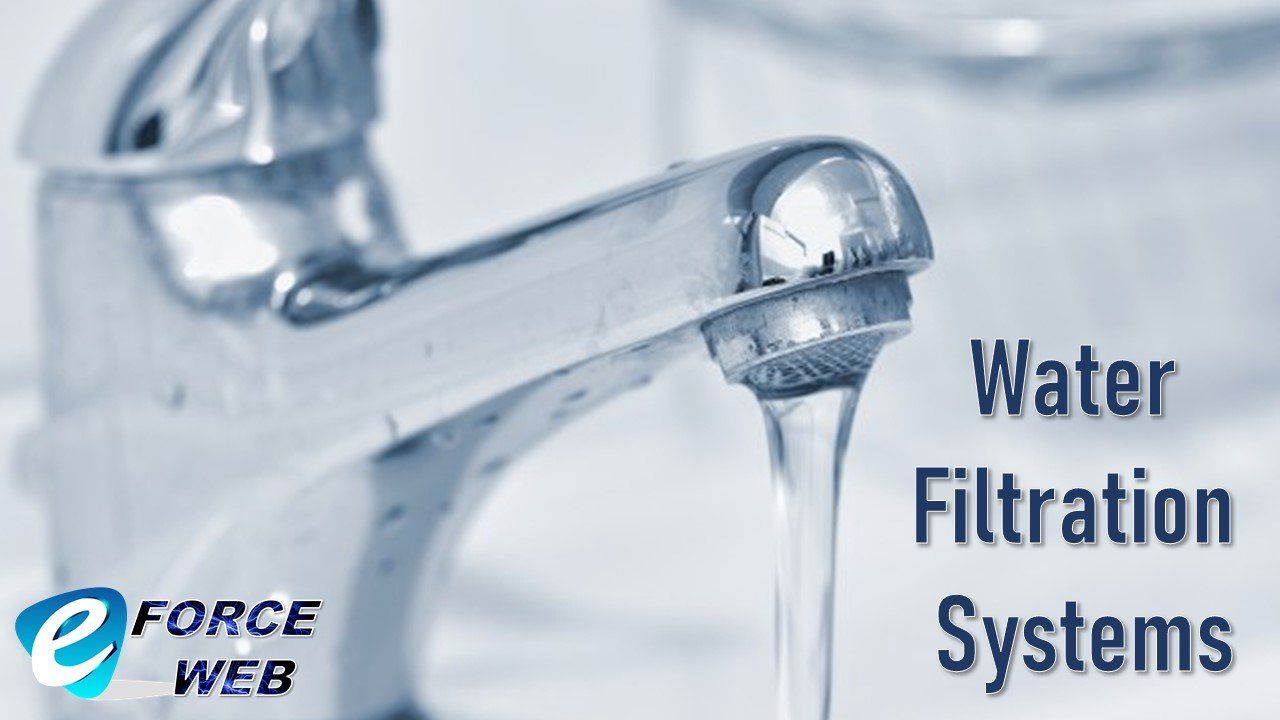
The use of in-home water filtration systems can help a homeowner to receive fresh drinking water daily into the home. In some cases, the source of drinking water coming into the home brings an issue of concern for the color, taste, odor or viewing of sediment in the water. When this happens, then it is important to try to determine the source of the water contamination to make a plan to clear up any concerns over the in-home water supply. The three types of in home water filtration systems bring fresh water to the home Drinking water comes into the home one of three ways: by a public water system (city or town tap water), by a homeowner’s private well (well water), by ordered bottles from a water service, or small water bottles purchased from the store. The first order of business is to find out where the water comes from and test the water for any known contaminants. If the water comes from private well, it is your own responsibility to regularly have the water tested to determine if it is safe for drinking or cooking with in the home. In the case that the water servicing the home is not safe levels to drink, it may be necessary to utilize a water treatment option to purify the water being used for the home. The water coming into the home should be evaluated to determine what contaminants may be present in the home, then a plan can be devised to remove these contaminants for safer home drinking water. Make sure your water treatment system is certified A water treatment unit that is certified by the NSF, Underwriters Laboratory (UL) or Water Quality Association are the beset options to use to test the water system. It may be necessary to utilize more than one treatment option to ensure remediating any water treatment needs at the home. Next, the homeowner can decide if it is necessary to treat any of the water or just a limited number of water faucets. The homeowner can pick point-of-use (POU) or point-of-entry (POE) as an option for home water treatment. The POU system usually treats water at one faucet or only on location in the home. This may be chosen by the homeowner to be the kitchen faucet, or the refrigerator water and ice dispenser. This treatment system is fine to use when water is low in contamination overall, and you want safer water for cooking and drinking. The other system is a POE water treatment system. It treats all of the water at the point of entry into the home. The homeowner will need to consider several other factors before installing a water treatment system: • The cost of a new water treatment system • Access to where the new system will be installed • Ability to continually treat the new treatment system The list of possible contaminants to water systems is "deep and wide"! The list of possible contaminants to a home water system is extremely long, and includes the following identified contaminants: • Ammonia • Arsenic • Bacteria • Calcium • Chloride • Chlorine • Fluoride • Hydrogen sulfide • Iron • Lead • Magnesium • Manganese • Nitrite and nitrates • Pesticides • Radon • Radium • Sodium • Sulfide • Selenium • Trichloroethylene (TLE) • Trihalomethanes (THMS) • Uranium • Viruses • Vinyl chloride • Volatile organic compounds (VOCs) When you need a plumber in Colorado Springs, just call us for emergency plumbing in Colorado Springs in the surrounding areas. If you have questions regarding a home water or water filtration system, just give us a call. We are here for you anytime that you need us! Call today.
